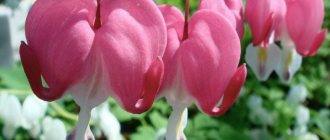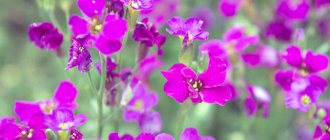Introduction
There are several leading companies in the world engaged in eustoma breeding. In the Russian Federation, mostly seeds from these producers are sold, but packaged by local companies.
Because of this, confusion often arises in the names of varieties. Therefore, we will present international names presented on the official websites of breeders. In most cases, varieties are named after a color, and this color is included in several collections.
Eustoma varieties are divided into five groups depending on the timing of flowering.
Group “0” – very early, “1” – early, “2” – middle, “3” – late, “4” – very late. Some manufacturers distinguish four groups, without the “super early” one.
Lisianthus varieties are most often bred from the species Eustoma Russellianus (Russell), formerly called Grandiflorum or Eustoma large-flowered.
Lighting and temperature conditions
During development, the flower must receive sufficient heat and light. An adult plant will delight its owner with lush, long-lasting flowering for a long time if the pot is placed on a well-lit windowsill. Lisianthus prefers bright but diffused light. In this regard, the plant must be placed on the windowsills of eastern or southwestern windows. In case of persistent drought in the summer, the crop needs to be shaded.
When growing eustoma, it is necessary to create a special temperature regime. In summer, this plant feels good at standard room temperatures within +18...+25 degrees. In autumn, temperatures begin to gradually decrease. With the arrival of winter, the flower goes into a dormant state. During this period, it is recommended to take the culture out to the balcony or to another room where you can set the temperature to +10...+15 degrees.
White
Series "Echo" (Echo) variety "Pure White". A tall variety (60-80 cm in height) suitable for growing at home and in the garden for cutting. The first group of flowering, large double flower (5-6 cm) pure white.
“White” from the “Rosita” series (Rosita, 1, 2, 3 and 4). New big collection. A tall variety (80-100 cm) with a medium-sized double flower in the shape of a rose. An excellent variety for cutting and making bouquets.
"Ivory" (Ivory) in the line "Carmen" (Carmen). The color translated is “ivory”. A low-growing variety (15-25 cm) from the popular series of “indoor” eustomas. A simple white flower.
"Sapphire White" (Sapphire white or white sapphire). A low-growing variety for growing at home. Pot 10-20 cm, plant height 13-15 cm, simple flower. Eustoma “Sapphire white” is a real mini rose.
“White” (White), series “Rosie” (Rosie). A low-growing plant 15-25 cm high with a fully double flower. Attractive white eustoma for true connoisseurs.
Other varieties
Other popular varieties are all called “White” by default and differ in series. Therefore, we will list the series and flowering groups and if there are Russian names.
- Tall varieties are simple: “White Mermaid” (“White” from the “Mermaid” series), “Piccolo” (Piccolo, 1, 2 and 3).
- Tall terry: "Alissa" (Alice, 1), "Borealis" (Borealis, 0), "Excalibur" (Excalibur, 2 and 3), "Mariachi" (Mariachi, 2). "ABC" (ABC, 1 and 3), "Flare" (Flae, not specified). “Arena” (Arena, 2), “Corelli” (Corelli, 2), “F1 Croma” (Croma, 2 and 3), “Super Magic” (Super Magic, 2).
- Low-growing simple ones: “Silver” from the “Florida” series (Florida).
Planting gentian at home for seedlings and caring for it
Tall varieties are perfect for growing on site. During the period of active flowering, they will decorate the garden with luxurious flowers, which, when cut, will last at home for up to two weeks. Preparations for planting in open ground begin long before spring with the cultivation of seedlings.
When to sow
It will not be possible to plant seeds directly into the ground on the site, especially before winter - eustoma does not tolerate temperatures below +10°C. The period from planting to flowering takes 22–26 weeks, so seeds should be planted for seedlings in December–February.
Can it be propagated by cuttings or roots?
Propagation by cuttings is possible only in theory; in practice they do not take root. The same thing happens when dividing the rhizome - the fragile roots of lisianthus react painfully to any damage. That is why dividing the bush can lead to the death of the entire plant.
As for propagation by bulbs, this is basically impossible, since lisianthus is a herbaceous plant and does not form bulbs.
If you are offered to buy lisianthus bulbs, walk away. At best, the seller is deluding himself, at worst, he is trying to deceive you.
Growing from seeds
Reproduction by seeds is perhaps the only really effective way to propagate eustoma. Planting seed material is sold in a wide range, although more recently it was available only to special farms involved in floriculture. The seeds of the plant are extremely small, one gram contains from fifteen to twenty thousand, so they go on sale in the form of pills. The shell serves as auxiliary nutrients that help in the development of the plant at the initial stage.
Due to their very small size, lisianthus seeds are sold in pelleted form.
How to till the soil and plant seeds
The soil for planting should be light, a commercially available mixture for Saintpaulia works well. Another option is to plant seeds in peat tablets. They are convenient because in the future you can dispense with transshipment into larger containers without damaging the sensitive roots of small lisianthus. How to prepare the soil yourself:
- Mix two parts peat moss with one part garden soil and half part sand.
- The soil must be sterilized, as the slightest infection can quickly kill the seedlings. To do this, the soil is spilled with boiling water and a strong (dark pink) solution of potassium permanganate.
- After the earth has cooled, the seeds are planted - laid out on the surface of the soil and lightly pressed down.
Sterilization is also required for containers in which seedlings are planted. Peat tablets are also treated with boiling water and potassium permanganate, after they have swollen to the desired size and cooled, they begin to plant seeds.
The seeds are laid out on the ground and pressed lightly
Planting process:
- The seeds are laid out on the surface of the prepared soil and lightly pressed down.
- After planting, you need to moisten the soil; it is convenient to use a spray bottle for this.
- The nutrient composition covering the seeds hardens after drying, which creates difficulties for weak shoots to germinate. To avoid such problems, after moistening the dragee, you can gently crush it with a toothpick, destroying the shell.
- The planting is covered with film or glass, you can use a container with a transparent lid, and placed in a well-lit place.
Planted seeds are sprayed with water
Caring for eustoma seedlings
Eustoma seedlings are very demanding of light; plantings should be placed on well-lit window sills. Seeds planted in winter need additional artificial lighting due to the short daylight hours. You can use a phytolamp (sold in stores that specialize in selling garden supplies); if you don’t have one, a regular fluorescent lamp will do. Seedlings should be under artificial light for up to 12–15 hours a day until approximately the end of March.
Seedlings should be kept under lighting at night in winter.
When germinating seeds, you need to ensure a favorable temperature regime . During the day, seedlings should warm up to 22–25°C, at night - no lower than 18°C. At first, you won’t have to moisten the germinating seeds very often, since in closed containers there will be enough evaporated moisture. If the soil dries out, carefully spray it with water from a spray bottle. Be sure to provide ventilation for the germinated seedlings by removing the lid from the container or removing the film for 5–10 minutes.
The first shoots appear approximately two weeks after planting the seeds. Germination of lisianthus is considered good if 40–50% of the planted seeds have germinated. After the first sprouts appear, watering should be carried out only in the morning, so that the stem and leaves have time to dry by the evening. This will reduce the risk of seedlings becoming infected with root rot. Approximately 5–6 days after germination, seedlings need to begin hardening off. On the first day, air baths are performed for 10 minutes, then the same amount is added every day. After reaching three hours, the film cover (container lid) can be removed.
Recent Entries
Lilac perennials that are beautiful, compact and do not crowd out other plants Why when buying seedlings you should not take the sellers’ word for it and how to determine the age of the plant using 3 signs Tomato seedlings have turned purple or whitish: why the color has changed and how to save the plants
When picking, plants are placed in separate containers
After two pairs of true leaves appear, 6–8 weeks after germination, the seedlings are planted in separate pots. The sprouts will be very small, but this is the normal appearance of a plant at this age. When picking, you need to carefully pick up the seedling with a toothpick along with a lump of soil and replant the baby separately. You should not delay picking; the rapidly growing root system is easy to damage. The soil for transplanted sprouts is taken the same as when planting. It does not need to be sterilized; it is enough to treat it with fungicides (antifungal drugs). Fundazol diluted in water at the rate of 1 gram per 1 liter of water is suitable.
After a month, the grown seedlings need to be transferred to larger containers . You need to act carefully, trying not to damage the roots.
- Place expanded clay drainage at the bottom of the container (layer thickness - 3 cm).
- Then soil is poured - about 4 cm (you need to focus on the size of the container and the plant itself).
- The sprouts are removed along with the soil and very carefully moved to a new container.
- Spread the soil along the walls of the container, lightly compacting it, being careful not to leave the root collar exposed.
- After transshipment, water.
In the future, it is important not to overwater or dry out the plants. Lisianthus should be watered when the top layer of soil dries out with warm water that has settled. It is strictly forbidden to spray growing eustomas with water - this leads to diseases of the leaves and stems.
The seedlings will grow in these pots before being transplanted into the garden.
If the seedlings grow slowly
Flower growers who breed eustoma note that in the first months, lisianthus grows very slowly. This is due to the expansion of the root system, after which the above-ground part begins to grow. Therefore, if it seems that the seedlings have stopped and are not growing in size, this is normal; after a couple of months, active growth of the plant itself will begin.
For more abundant flowering, you can pinch lisianthus at the stage of appearance of 5–6 pairs of leaves. This procedure will make the plant bushier.
Feeding seedlings
Seedlings can be treated with biogrowth stimulator Epin at the rate of 4 drops per 100 ml of water. The plants are sprayed after picking, timing them so that the leaves dry out by evening. After transplantation, the plant begins to be fed weekly; Agricola for flowering plants is suitable for this. It is better to use the liquid form of the fertilizer, diluting it with water according to the instructions. Many gardeners recommend slightly lower concentrations than those indicated by the manufacturers.
Video: growing lisianthus from seeds at home
Green
“Lime Green” (Lime green) from the “Mariachi” series. Tall variety (75-90 cm) with large (5-7 cm) extra-double flowers of light green color. Second group of flowering.
“Green” (Green) from the “Super Magic” series, we know as eustoma “Green Alley” from. A tall variety with large double flowers with a pale green tint and a medium flowering period.
"Green" (Green) from the episode "ABC 1". Tall variety (80-100 cm). Large double inflorescences of greenish color. Strong stems and high storage stability.
Other varieties
- Tall simple: "Piccolo" (Piccolo, 2 and 3).
- Tall terry varieties: “Alissa” (Alice, 2), “Rosita” (Rosita, 1, 2 and 3), “Advantage” (Advantage, 2), “Arena” (Arena, 3), “F1 Croma” , 1 and 3).
Diseases and pests
Under unfavorable weather conditions, damp and cold weather, or improper care, even healthy seedlings can become susceptible to diseases. The main diseases of eustoma are fusarium leaf wilt, late blight, powdery mildew, gray and root rot, as well as tobacco mosaic. Almost all of them are successfully treated with antifungal drugs, except for the last one. If the plants are infected with the tobacco mosaic virus, the plantings will have to be destroyed and burned.
Various ways to combat common diseases are described in detail in our articles “How to get rid of late blight on tomatoes” and “How to get rid of powdery mildew on phlox.”
Few insects attack the “bitter flower”. Only spider mites and aphids can cause serious harm. At the first signs of pests, you should not wait until they completely destroy the flowers. For protection and prevention, you need to use appropriate drugs (“Aktara”, “Fitoferm”).
Yellow
“Yellow” (Yellow), series “Echo” (Echo). Tall variety (70-90 cm) with a standard double large flower. First group of flowering. Legendary series with good reviews. Excellent option for cutting.
"Yellow" (Yellow) from the series "ABC 1 and 2". In Russia it is also sold as "Madge Yellow" from. Tall variety (80-100 cm) with large double yellow inflorescences.
"Yellow" (Yellow), series "Super Magic" (Super Magic). Tall variety (70-90 cm). Large double yellow flowers. First and second group of flowering.
Other varieties
- Tall varieties are simple: “Piccolo” (Piccolo, 2).
- Tall terry: "Alissa" (Alice, 2), "Aube" (Aube, 3), "Borealis" (Borealis, 0), "Excalibur" (Excalibur, 3), "Mariachi" (Mariachi, 2), "Rosita "(Rosita, 3 and 4), "Advantage" (Advantage, 2), "Gold" in the "Arena" series (Arena, 3), "Corelli" (Corelli, 3), "Croma" (Croma, 3).
- There is also a fairly popular Twinkie Yellow variety from, but we were unable to find information among global producers. According to the packaging: plant up to 50 cm in height with large simple yellow flowers.
Features of cultivation
- eustoma prefers bright, diffused light;
- the best soil for eustoma is bark humus and peat in equal parts;
- propagated only by seeds, since cuttings do not germinate, and the too fragile root system does not tolerate division;
- It is necessary to water only after the substrate has dried 2 cm deep;
- try not to replant the plant: it is only conditionally perennial, and the roots will not tolerate replanting;
- home eustoma blooms best in a cool, ventilated room.
In the photo: Blooming purple eustomas in the garden
Red
“Carmine” (Carmine or carmine) from the “Mariachi” series (Mariachi, 2nd flowering group). Lisianthus has extra-double large flowers (5-7 cm in diameter) of red color, very similar to a rose. An excellent variety for making bouquets. The height of the bush is 76-96 cm. According to reviews, the flowers tolerate transportation well and last a long time in a vase.
“Red” from the “F1 Arena” series (F1 Arena). Tall variety (70-90 cm) with double large flowers (6-7 cm in diameter) from dark pink to light red or cherry shade. The third group of flowering.
- Today we cannot recommend other proven modern varieties of red eustoma.
What to look for when choosing eustoma?
If you plan to plant a flower in open ground, then you should pay attention to tall varieties. They are more resistant to negative influences. Low-growing ones are the best option for a home or greenhouse. When purchasing seeds, it is important to clarify the height of the adult plant and the flowering period.
Not unimportant indicators when choosing are indicators of resistance to temperature fluctuations and light deficiency. Taking these parameters into account, you can choose the best option for any region of the country.
Pink
“Deep Rose” (Deep Rose) from the American series “Flare” (Flae, translated as flash). On sale it is referred to as “Laguna Deep Rose”, only in the photo it looks more saturated in color. Tall variety of the second flowering group. Terry pink flower.
“Pink” (Pink), series “Echo” (Echo). Tall variety (70-90 cm) of the first flowering group from the famous series. Standard double flower. One of the most popular pink eustomas for growing as cut flowers.
"Misty Pink Mariachi" Tall collection (up to 100 cm) “Mariachi” with an extra-double flower reminiscent of a camellia. Light pink eustoma is perfect for making bouquets. Second group of flowering.
"Deep Rose" from the ABC 1 episode. We sell the variety under the name “Maidge Deep Rose”. Tall variety for cutting, 80-100 cm high, with double flowers of light pink color.
"Rose" in the collection "Carmen" (Carmen). Low-growing indoor eustoma (15-25 cm) pink. Simple flower. High-quality root system. Resistant to fusarium.
“Pink” (Pink), series “Florida” (Florida). A low-growing variety (20-25 cm), which can be grown in open ground, a greenhouse and at home (a pot of at least 12 cm in diameter). A popular series with the most resistant varieties to summer heat in the garden. Light pink color.
“Pink” (Pink) from the series “Rosie” (Rosie). A low-growing plant (15-25 cm) with a strong root system, which is suitable for growing as a houseplant. Fully double flower of delicate pink color.
Other varieties
- Tall varieties are simple: “Rose Pink” (Rose pink, 2 and 3) series “Piccolo” (Piccolo).
- Tall terry: "ABC" (ABC, 2 and 3), "Alissa" (Alice, 1 "Rose" and 2 "Pink"), "Arena" (Arena, 1, 2, 3 and 4), "Cocktail Champagne" (Champagne cocktail) in the “Aube” series (Aube, 3), “Borealis” (Borealis, 0), “Corelli” (Corelli, 3), “Rose Pink” in the “Excalibur” series (Excalibur, 2 ), “Mariachi” (Mariachi, 2), “Clear Pink” (Klia pink) series “Robella” (Robella). Series "Rosita" (Rosita): "Rose Pink" (Rose pink, 1, 2 and 4), "Pink" (Pink, 2 and 3) and "Pink Flash" (Pink Flash, 3), "Super Magic" ( Super Magic, 2).
- Light pink lisianthus "Champagne" (Champagne) in the collection "Echo" (Echo), "Misty Pink" (Misty pink) from "Mariachi" (Mariachi, 2) and "Rosita" (Rosita, 2), "Rose" ( Rose) from "ABC" (ABC, 2), "Corelli" (Corelli, 2 and 3).
How to plant in open ground
Purchased or independently grown eustoma seedlings can be planted in open ground in a garden or flower garden. Since this is a fastidious plant, in order for it to take root, you need to take into account some factors.
First of all, it is important to decide on the landing site. This should be a draft-free area in partial shade. In this case, you need loose soil that can drain water well.
Before planting, the soil is dug up using a spade. At the same time, the soil is fertilized with complex mineral fertilizers (nitrophoska, azofoska or the like). If the soil is highly acidic, it will be necessary to add wood ash or dolomite flour.
After mixing the fertilizers with the soil, level the area and make shallow holes where the seedlings are placed. After planting, careful watering is carried out. It is important that water does not get on the foliage. In addition, the area is mulched with peat.
Care involves constantly maintaining the soil in a loose state with optimal moisture. Remember: if there is insufficient watering, the eustoma may drop its buds or dry out completely. It is important to promptly remove weeds from the garden bed. Tall varieties are tied up.
During the open ground season, the plant will need to be fertilized 2-3 times. You should not exceed the recommended amount; it is better to even reduce the concentration. In case of frequent rains, it is recommended to carry out the prevention of fungal diseases.
Apricot (Apricot) and Champagne
Among the varieties of lisianthus there is a separate color called “Apricot” (Epricot or simply apricot), which is translated as “apricot”, as well as “Champagne” (Champagne). Varieties with these color names are found among many manufacturers. They are also described as coral or salmon in color.
"Apricot" in the "Corelli F1" line (Corelli F1). Also a tall variety (70-90 cm) with large double flowers of salmon-apricot color. The third group of flowering.
"Light Apricot" (Light Apricot) in the series "Alissa 2" (Alissa or simply Alice). An excellent tall variety (80-90 cm) for growing at home and for cutting. Large double flowers of a delicate coral shade with fringed petals.
"Light Apricot" (Light Apricot) from the collection "Falda F1" (Falda). Tall variety (70-90 cm) with simple medium-sized flowers of light salmon color. Second group of flowering.
"Champagne Arena" (Champagne "Arena"). Tall variety (80-10 cm). Popular series. Large double flower of high quality. Resistant during transportation. The third group of flowering.
“Champagne Echo” (Champagne in the “Echo” series). Tall variety with large standard double flowers. Suitable for cutting. First group of flowering. Eustoma “Echo Champagne f1” is the most popular among varieties of this color.
"Champagne Alissa" (Champagne "Alissa"). The tall variety (80-90 cm) of eustoma is distinguished by large double flowers with dense petals. Amazing color. Second group of flowering.
"Champagne Super Magic" (Champagne "Super Magic"). The plant is 70-90 cm in height with strong stems. Double flower of unusual color, medium size. Second group of flowering.
Problems and their solutions
In any growing option, be it an apartment or a garden plot, lisianthus is not immune to the danger of diseases and pests. Seedling diseases are easier to prevent because they are difficult, sometimes impossible, to treat. To prevent the fungus from infecting the seedlings, be sure to sterilize the soil for planting and all equipment.
Experienced gardeners do not mention pulling out seedlings, but to prevent this scourge, it is necessary to supplement the plantings with lamps in the winter season. To protect young seedlings from lodging, you need to protect them from drafts and regularly inspect them for diseases and pests.
Table: typical pests and diseases of eustoma
| Disease/ Pest | Signs of the disease | Control measures | Prevention |
| Aphid | Leaves and buds curl and fall off. Pests are visible to the naked eye. Transparent drops remain on the plant. |
|
|
| Whitefly | Visually distinguishable white insects on flowers. Deformed, yellowed leaves, the appearance of light or yellowish spots on them. | ||
| Powdery mildew | White coating on the leaves, spreading to the stems. Young leaves grow curled, old leaves turn yellow and wither. |
|
|
| Gray rot | The appearance of brown spots or gray fluffy coating on the stems and leaves. Leaves and flower stalks rot and subsequently die. |
|
|
| Fusarium wilt | The leaves wither, turn yellow, curl, and die. The stem at the root collar darkens. |
|
|
Blue and blue
Among the varieties of eustoma it is difficult to find a blue or blue color in our understanding. By the name “Blue”, manufacturers mean lilac, lavender or dark purple color. We did find several varieties of lisianthus close to the blue and blue colors.
"Blue Flash" (Blue flash or blue flash) in the series "Robella" (Robella). A tall plant (80-100 cm) with a large double flower. Second group of flowering. An excellent option for growing at home and for cutting.
“Milka” (Milka), series “Piccolo” (Piccolo). A fairly new variety that has already settled in the hearts of many gardeners. Eustoma "Milka Piccolo" 80-100 cm in height. A simple flower of medium size. Second group of flowering. Delicate blue color of the petals.
“Blue” (Blue) in the series “Rosita” (Rosita, 3rd and 4th group). A new series with a medium-sized double flower resembling a rose. Eustoma "Rosita Blue" grows about 80-100 cm in height. The color of the inflorescence is very close to blue.
"Blue" (Blue) in the series "Corelli" (Corelli). Tall variety. Large double flower almost blue. Excellent for making bouquets. Lasts a long time in a vase. The third group of flowering.
How to control pests in the garden
This plant cannot be classified as a resistant plant. Most attention is attracted to this plant by mites, as well as slugs and other insects.
In order to minimize the risk of plant infection, periodic preventive maintenance is necessary.
Clarkia graceful - varieties and types, care and planting, diseases + 78 photos- Irises - description of the species, cultivation, reproduction + 102 photos
Campsis - planting, care, location rules, watering, types of reproduction (67 photos + video)
Purple eustoma
We will separately consider the well-known varieties with the “Blue” color according to the manufacturers. And let's try to decide together what color they are? We believe that these varieties are much closer in color to purple than to blue.
Let’s start right away from the legendary “Echo” series and the “Blue” variety, or in simple terms – “Echo blue or blue f1”. Tall eustoma (60-80 cm in summer) with a double flower (4-6 cm) of blue-violet color. First group of flowering.
“Deep Blue” (Deep Blue), series “Flare” (Flae, translated as flash). It can be found on sale under the name “Laguna Deep Blue” from Tall lisianthus with a voluminous double flower of violet-blue color.
"Blue" in the "Mariachi" collection. Tall series (80-100 cm). Large extra double flower (5-7 cm) with pure purple color. Second group of flowering.
"Deep Blue" from the "Super Magic" series. Lisianthus grows 70-90 cm in height. Terry large flower of rich purple color with a dark blue core. Second group of flowering.
"Blue" (Blue) in the series "Florida" (Florida). A popular low-growing variety for growing in pots. A simple purple flower.
"Blue" from the "Mermaid" series. Our variety is also known as “The Little Blue Mermaid” from. Compact bush (13-17 cm) with a simple three-dimensional flower (5-6 cm).
"Sapphire Blue" (Blue or light blue sapphire). A popular series of low-growing varieties with simple inflorescences. It is popularly called a dwarf rose or mini-rose because the bush is only 13-15 cm high. Rich purple color.
"Blue Carmen" (Blue Carmen). Low-growing variety (15-25 cm). A simple flower of medium size.
"Lavender Blue" (Lavender Blue or blue lavender) from "Rosie" (Rosie). A low-growing variety with double flowers from dark blue to light purple.
“Lilac” (Lilac, translated lilac) in the series “Carmen” (Carmen). A low-growing variety (15-25 cm) with simple, medium-sized lilac flowers. Excellent bushiness. We sell it as “Carmen Lilac F1” from “Plasma”.
Step-by-step instructions on how to grow eustoma from seeds
Growing lisianthus from seeds is a rather painstaking process that requires a lot of attention from the grower. To grow eustoma flowers from seeds yourself, you need to follow the following instructions.
- To perform this procedure, you will need a plastic tray and a metal grill with small windows. The size of the grid should ensure that the peat tablets are kept above the water.
- Initially, you need to pour water into the pan with the addition of a growth stimulator. You will also need to add other fertilizers, in particular nitrogen. It is recommended to add soil disinfectants to the water.
- Next, a grid with peat tablets is installed above the pan. They should barely touch the surface of the water. In this case, the tablets need to be spaced from each other at a distance of 5 centimeters. This will avoid fungal infection between seedlings.
- After the tablets swell from moisture, you need to place eustoma seeds in them. 3 seeds are planted in each peat tablet.
- The first shoots will appear 2 weeks after planting. At this time, you need to select the most developed and strong shoots. All sick and weak ones should be removed.
- It is important to place the tray with the trellis and plants in a warm room with moderate diffused lighting. The top of the tray is covered with glass or film to create optimal humidity conditions.
- It is necessary to ventilate the seedlings daily, without temperature changes or drafts. If the peat tablets dry out, it is recommended to carry out additional watering.
- After 5.6 leaves appear on the young plants, the cover can be removed from the tray.
- Next, transplant the eustoma along with the peat tablet into its own flowerpot. The transplantation process should be carried out in the evening.
eustoma seedlings
Light purple (lavender)
"Lavender" in the series "Mariachi" (Mariachi). A similar variety to the previous one, only with an extra-double light purple flower 5-7 cm in diameter and a second flowering group.
“Lavender” (Lavender) in the “Rosita” collection (Rosita, group 3). Huge new series in the 2022 catalogue. Tall variety (80-100 cm) with a medium-sized double flower. The inflorescence is shaped like a rose. Soft blue color.
"Lavender" in the Japanese line "Echo" (Echo) or the popular name "Echo Lavender". Tall plant (60-80 cm in height). Ideal variety for cutting. Early flowering - 22-24 weeks, first group. Large double flower (4-6 cm).
"Lavender" in the American series "ABC 2" (ABC, 2). Tall variety (80-100 cm). Large double flower. Light lilac color of dense petals. Lasts a long time in a vase.
Prevention of diseases of eustoma seedlings
Coconut substrate and plant fibers are prone to mold. Therefore, before using it, you need to treat it with potassium permanganate or a fungicide.
When germinating seeds, be sure to ventilate to avoid the appearance of mold:
- To prevent black leg and fusarium rot, Fundazol is used.
- Recently, many flower growers have fallen in love with epin and zircon. These drugs stimulate physiological processes in the plant body and increase stress resistance.
Picking seedlings
- When four normal leaves appear, the plant is ready for picking. Seedlings grown in a container or peat tablets need to be planted in separate pots; sometimes two or three plants are allowed in one container.
- This procedure will speed up the growth of the flower, make the plant stronger, and improve the development of the root system.
- Using a thin object, carefully lift the miniature plant and remove it from the peat soil.
- A small depression is made in the pot where the picking will be done. The sprout is transferred into this depression.
- The soil should be well moistened. Deepening is carried out along the lower leaves.
- Immediately after the procedure, put on a protective cap (plastic bag or plastic cup). The plants are kept in this state for several weeks.
- As a rule, plants tolerate picking well. In two weeks, your seedlings will already be twice as large.
Picking seedlings at the age of 2 months.
Brown and burgundy
In addition to popular colors of inflorescences, such as white, pink or purple, there are varieties of eustoma with a rather amazing palette of colors. We have selected several unusual varieties for you.
"Deep Brown" in the episode "Rosanne 2". A tall variety with a standard double flower, but of rare color. The color is translated as "dark brown", but it is described as lavender brown.
"Brown" in the series "Rosanne1". This variety is from the same series, only with the first group of flowering. It is difficult to describe the color palette of the inflorescence in one word. You can say lemon color, turning into a light brown shade with lilac notes or close to burgundy color.
Lighting, as well as temperature, which is necessary for growing eustoma
In order for the eustoma to delight you with its flowers, it is necessary to provide it with good lighting, but despite this, direct rays should not fall on the flower itself. As for humidity, the flower is very susceptible to changes.
But despite the fact that the plant is very whimsical, it is very easy to choose the temperature for it, the main thing is that the temperature is not less than 10 degrees.
"Pikoti" or two-color
Picotee refers to a special pattern in which the edges of the petals are painted a different color than the rest. Varieties called “picoti” are produced by many seed manufacturers, and they are often included in various series.
Varieties with a border of different colors and a white center are loved by gardeners around the world. However, the manufacturer warns that the variety may lose its colored edges and become a solid color depending on growing conditions.
White and pink “Pikoti”
"Pink Picotee lmp." (Pink Picoti lmp. in the “Echo” series (Echo, 1). A tall variety with a large double flower of white and pink color. A new variety in the famous “Echo” collection.
“Pink Picotee” (Pink Picotee) from the “Croma” series. Tall collection (80-100 cm). A pink flower with a white edge, very similar to a rose. The third group of flowering.
“Pink Rim” (Pink Rim) from the “Piccolo” collection (Piccolo, 1 and 3). Tall bush (80-100 cm) with a simple flower. In our country, the eustoma of this variety is often called “Piccolo Pikoti crimson”.
"Misty Pink" (Misty Pink), episode "ABC 2". Tall lisianthus with medium-sized double flower. Delicate pink color with white closer to the base of the inflorescence.
"Sapphire" (Sapphire). Dwarf variety measuring 13-15 cm in height. A simple flower with a delicate pink color. Excellent white and pink eustoma “Sapphire Pink Rome” is perfect for growing indoors.
“Rose Picotee” (Rose Picotee), series “Rosie” (Rosie). Low-growing variety 15-25 cm in height. A fully double flower is white with pink droplets on the edges of the petals.
Other varieties
- Tall simple varieties: “Hot Lips” (Hot Lips) in the “Piccolo” series (Piccolo, 2).
- Tall terry varieties "Pink Picotee" (Pink Picotee) of white and pink color in the collections "Aube" (Aube, 3), "Mariachi" (Mariachi, 2) and "Rosita 1". And also “Rose Rim” from ABC 1, Hot Lips from Rosita 2 and Excalibur.
- “Pink Rim” (Pink Rim or “Pink Haze” from the American series y) from the series
How to care for eustoma in an apartment
Low-growing varieties of lisianthus are ideal for growing indoors. Seed manufacturers offer a wide selection to suit every taste. Usually you can see marks on the seed packets indicating the height of the plant. Compact series will fit perfectly on the windowsill and will delight you with large, bright flowers.
Growing indoors
Planting seeds and the main stages of caring for germinating seedlings for indoor propagation are no different from growing seedlings intended for open ground. Everything has been discussed above. The only difference is that after transplanting the grown seedlings, they remain on the windowsill until flowering begins.
Eustoma feels comfortable in the temperature conditions of the apartment. The lighting should be bright, but without direct sunlight.
Table: seasonal conditions for keeping lisianthus at home
| Season | Temperature | Humidity | Watering | Top dressing | Illumination |
| Summer | +22оС…+24оС | Do not wet the leaves and stems by spraying. You can place trays of water next to the eustoma. | Sufficient, as the soil dries to a depth of 2 cm. Pour out excess water from the pan immediately. | Every week or every two weeks, apply fertilizers for flowering plants (Agricola - according to the instructions, the dosage can be taken a little less than indicated). | Bright light without direct rays hitting the plant. |
| Winter | +10о…+15оС | Do not moisturize. | Reduce. | Do not carry out. | Shaded place. |
It is not difficult to maintain lisianthus at home. The temperature in the apartment is quite suitable for the flower’s comfortable existence. It is better to determine the place for it on window sills facing west or east. Eustoma is a lover of light, but direct contact with the burning rays of the sun can damage leaves and flowers.
You can determine when to transplant the eustoma into a larger pot by the roots that begin to make their way through the drain holes of the pot. This indicates that the plant has become crowded. A container with a volume of 2–2.5 liters is enough for 3 plants, which will develop and actively grow throughout the growing season until they enter a dormant state.
Humid air is beneficial for the plant, but it is important to remember that leaves and flowers cannot be sprayed, as this can lead to rot. The best option would be to place a container filled with water next to the flower pot.
If you decide to leave the lisianthus for the next year, after flowering the stems are cut off, leaving three internodes, and watering is reduced.
Differences from annual flowers
Since a perennial can only be grown in a subtropical climate, its growth can reach 15-20 cm. An annual can grow in outdoor conditions and reaches a height of up to 1.2 m. Perennial eustoma requires a lot of gardener experience, and growing annual varieties can be done even by yourself for a beginner flower lover.
Long-term cultivation is possible only in indoor conditions.
Meet the beautiful eustoma
Many good varieties of flowers are created through long selection, trial and error, often hybrids. But the beautiful eustoma has its wild ancestors. They have been growing on our planet for many centuries; it is now difficult to say exactly where the plant came from. It is generally accepted that the homeland of the ancestors of eustoma is the South American continent, since many wild species grow here. Flowers are also found on the Caribbean islands, in original Mexico.
In our time, of course, breeders have also worked with eustoma to create many luxurious varieties that amaze with their decorative properties. Due to this, you can increasingly see in photographs in magazines interiors and weddings that were decorated with these flowers. Not only florists use eustomas, they are also grown by millions of summer residents around the world. The process is not characterized by complex agricultural technology, but you still need to know some subtleties.
You can often hear the question, is eustoma an annual or a perennial? Especially from those who want to grow a flower at home or in the country. Let's figure it out - in countries with hot and warm climates, eustoma can grow like a perennial. We also plant it on our site, but in order to preserve the plant for next year, it is dug up and planted in a pot for the winter. Otherwise, the delicate root system, which is the weak part of the flowers, will freeze or die during floods. In the spring, the eustoma is planted again in a permanent place or in a new one on the site. At home, you can grow flowers year after year in pots on the window.
On a note! The fact that flowers need to be dug up every autumn has its advantages - you can create a new flowerbed next year, eustomas can be easily planted in another area, or combined differently.
So, you can understand that, as a perennial in most regions of our country, these luxurious flowers can be grown either in warm greenhouses, winter gardens, or by annual digging. There is also another option - planting in spacious containers or large flowerpots, which are placed on the site, and when it gets cold, they are brought into the house. This also has its advantage, because over the summer you can combine flowerpots in new ways and move the eustoma, creating a unique design on the landscape.
Of course, there are summer residents who believe that flowers can simply be cut short before winter and covered with a good layer of mulch. But not in all regions, even a dense layer of protection saves from freezing, and there is also no guarantee that a particular year will not be abnormally cold or rainy. Simply put, it’s better not to take risks - eustomas are not the kind of flowers that like experiments.
Did you know? Eustoma seeds are very small, like those of petunia. There are about 2300 of them in one gram, and not all of them have good germination. In order for 60-80 out of 100 seeds to hatch, they undergo special treatment.











